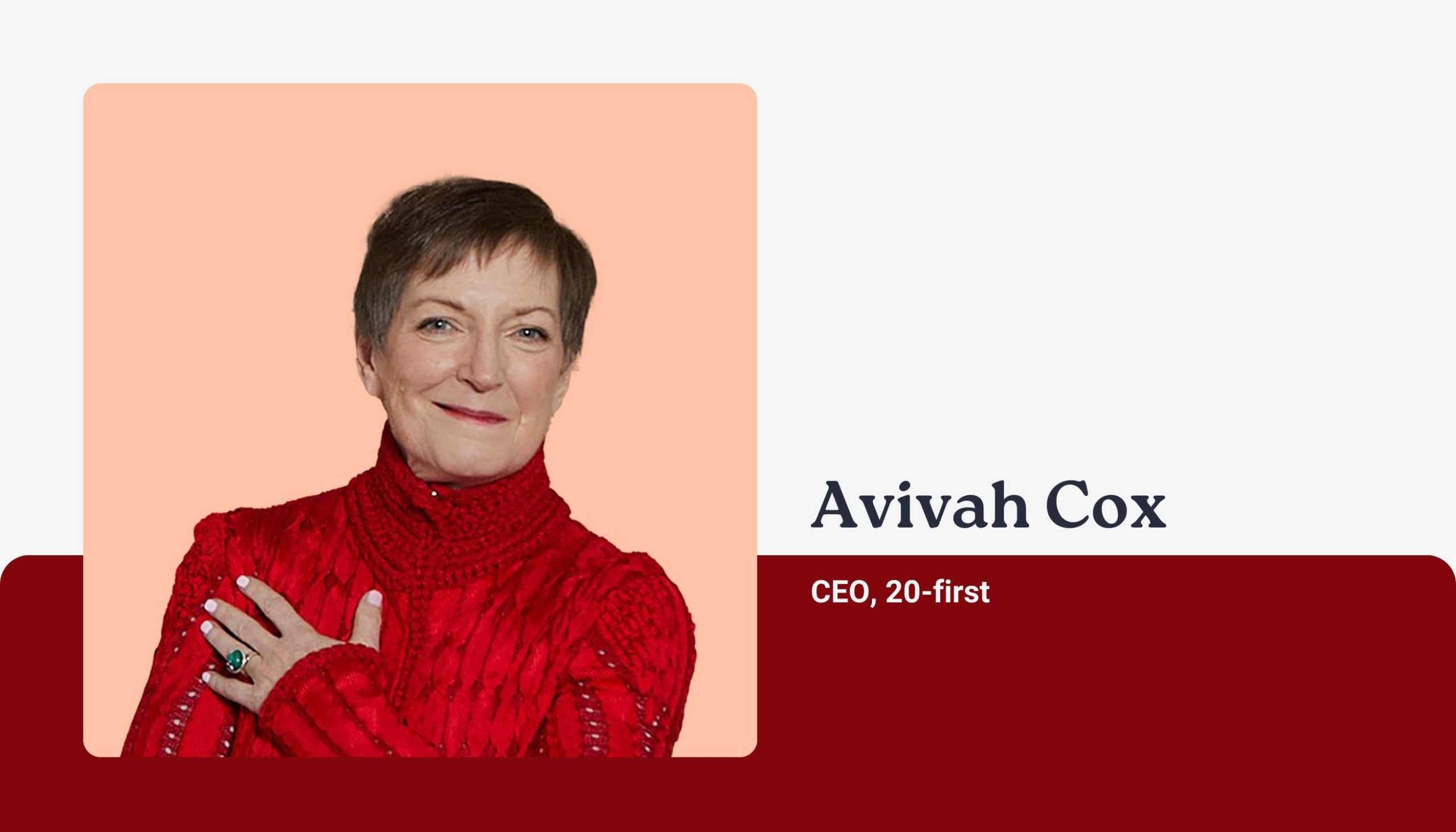Avivah Wittenberg-Cox, a trailblazer in the realm of gender balance and inclusive leadership, shares profound insights in an exclusive interview with The HR Digest. As the CEO of 20-first, she explores the transformative power of strategic balance in leadership, advocating for diverse perspectives across genders, generations, and global backgrounds. Recognized as a thought leader, Avivah has steered global CEOs towards impactful change, emphasizing the pivotal role of leadership in building inclusive workplaces that thrive in the 21st century and beyond. Dive into her visionary journey and groundbreaking initiatives shaping the future of work.

The HR Digest: As a pioneer in gender balance advocacy, what are some of the most significant breakthroughs you’ve witnessed in achieving gender parity in leadership roles?
The tipping point in all the organizations I work with who are serious about gender balance is when it becomes a leadership and management priority and is part of leaders’ own performance evaluations and accountability. It is a combination not only of policy and culture, but also leadership practice. This requires leaders skilled in both selling the WHY of gender balance (to everyone) and then pushing through the implementation (the HOW) over several years, and usually across several CEOs.
The HR Digest: You’ve advised global CEOs and leadership teams across various industries. Can you share an instance where your insights or recommendations led to a transformative change within an organization?
Gender balance itself is transformative. Once people see and understand this, it’s an easy leadership tool. One leader of a division in a big multinational told me that after working with us and balancing his all-male team, performance, productivity and engagement all went up dramatically. He wrote me a decade later saying he had consistently repeated this exercise whenever he was promoted to run ever-bigger teams and divisions. It was the fastest and easiest way to increase performance, and it became his default first step. He laughed at how easy and powerful it was – and how successful (and popular) it had made him.
“The tipping point in all the organizations I work with who are serious about gender balance is when it becomes a leadership and management priority and is part of leaders’ own performance evaluations and accountability.”
The HR Digest: You’ve coined the term “20-first,” emphasizing the need for balance in leadership across genders, generations, and nationalities. Can you elaborate on the rationale behind this concept and its implications for organizational success?
The 20-first brand came from the idea of moving from 20th-century thinking and practices to more future-oriented, 21st-century leadership responding to global realities. I often short-handed this as the 4 W’s: Web, Weather, World and Women – the revolutions in tech, sustainability, geopolitical shifts, and the mass arrival of women into labor forces, talent pools and customer bases. Leading companies understood and addressed the 4 W’s as strategic, transversal foundations to their futures.
We started in 2005 working with a lot of multinationals that were globalizing, seeing much of their future growth coming from new markets and needing their leadership teams to reflect a deeper understanding and representation of these places and cultures. At the same time, smart companies were already gender balancing as they saw the rising gender balance of their talent pools, customers, consumers and stakeholders. Bundling these two mega-trends made a lot of sense. Leaders readily understood the need to learn the language and culture of new markets, from China and India to Brazil. It was helpful to ‘bundle’ the need to also learn the language and culture of women as they rose to prominence around the world, and to adapt corporate culture accordingly. It required multi-cultural skills and what I called ‘gender bilingualism.’ Understanding differences in order to anticipate and serve customer needs and develop the best talent from across the globe.
The next comparably massive shift is the shift of our human demographic shapes from pyramids to squares. Historically populations were pyramidal, with deciles steadily reducing in size with age. With people living longer, the generational balance in fast-ageing countries around the globe is a similar number of older and young people – and workforces that will begin to balance between the over- and under-50s. This is something the world and the workplace have never experienced before. Those who adapt to it first, just like gender and culture balance, will gain significant competitive edge. And those that have already worked on these earlier shifts, by adapting their leaders, cultures and systems to work inclusively across differences, will find it easiest to make the change.
The HR Digest: Given the rapidly changing landscape of work, with the rise of remote and flexible work arrangements, how do you see organizations adapting their leadership strategies to ensure inclusivity and effective collaboration across diverse teams?
The best ones are upskilling their leaders and managers to manage flexible and virtual teams. This isn’t new. It’s just going to become a lot more common. Lots of global managers have managed teams of people of different nationalities they rarely see, who work across geographies and time zones, for decades. This will become more common everywhere and within countries. Knowing how to do this well, building trust, engagement and psychological safety; measuring output not input or presenteeism, and building strong succession pipelines, requires management skill. The middle manager may become once again an important fixture in a tech-enabled, distributed team landscape. A lot of what will need tending in an age of AI are the humans. HR and people skills will become increasingly important.
“Building a shared vision and mission that inspires and engages people across differences of all kinds is the very definition of leadership.”
The HR Digest: Your work extends beyond gender balance to encompass generational and international diversity. How can organizations strike a balance between embracing diverse perspectives while maintaining a cohesive and unified company culture?
That’s what I call leadership. It’s the prime imperative. And always has been. Building a shared vision and mission that inspires and engages people across differences of all kinds is the very definition of leadership. It may mean having the courage to move away from the idea that respect for diversity means a focus on micro-identities that separate people into employee resource groups and affinity groups, and instead find ways to bring people together in new ways – without any particular group dominating. The best global companies have done some of this work already. Their leadership teams and pipelines are gender-balanced and span multiple nationalities that reflect their future growth markets. They have built high-performance cultures that harness differences of perspective, cultures and background to grow and innovate. These skills now need to become more widespread.
The HR Digest: You’ve been recognized as a thought leader and innovator. What do you consider to be your most significant contributions, specifically in the field of HR?
Humbly, I like to think that one of my contributions was to reframe some issues, like balance, so they wouldn’t be seen as an HR (or DEI) responsibility. It’s the people with the power (of promotion, money and credibility) in any organization who need to push for strategic balance – and be accountable for achieving it (or not). A lot of the work I did was to help HR leaders get balance onto the ExCo agenda. Balance requires leadership, cultures and systems to be redesigned and adapted to shifting markets, consumers and talent. It’s bigger and more transversal than HR, and needs to be introduced that way. Otherwise, it’s a set-up-to-fail problem – and I suggest HR (and DEI) professionals point that out.
More specifically, on the gender front, I’d say that my contribution was to suggest that we stop widespread ‘fixing-the-women’ or ‘blaming-the-men’ approaches, and build the management skills to build gender balance. The same will now be true on generational balance. We need to stop ‘fixing-the-old’ and realise they will be one of our key sources of talent and knowledge for decades to come. That will take leadership vision and management skill.
The HR Digest: Your work has been instrumental in shaping the conversation around gender balance and inclusive workplaces. What are some of the most impactful initiatives you’ve led in this area?
I’ve had the honor and privilege of spending two decades working with early adopters of the future. They are always some of smartest and most enlightened leadership teams on the planet – and across the planet. My most impactful deliverable was to get balance onto their agenda – for a full day. Focused, safe and politically incorrect ‘Strategic Debates’ about how to balance strategically. Why? What? And How? Simply spending a day with these teams to reframe the way they addressed balance in their businesses – before they started down the conformist, copy-paste-other-companies route – was deeply impactful. And ensuring that they accepted accountability for defining the vision, the targets and the KPIs to make it happen. Like any other business initiative. These people already know how to lead change and disruption, they’d often just never been given permission/ been asked to think strategically about balance. And too often just passed the buck to HR.
The most impactful initiatives all did the same thing: Get balance onto the ExCo agenda. Let the ExCo define the balance their business needs to prioritize. Measure themselves on achieving it. Build management skills to support it. And implement cultures and systems that deliver it. It takes time. But it’s simple. And rare. It will be increasingly essential in the 21st century where welcoming and taking advantage of differences will make – or break – us.
 |
Avivah Wittenberg-Cox is a global thought leader navigating the intersection of gender balance, generational shifts, and the future of work. A sought-after speaker, consultant, and author, she empowers companies to harness the full potential of their diverse workforce through her firm, 20-first. Her book, Thriving to 100, charts a revolutionary roadmap for individuals and organizations to adapt to longer lifespans and reimagine what success looks like. With over 20 years of experience advising global CEOs, Avivah inspires leaders to build inclusive, high-performing workplaces for the 21st century and beyond. |





